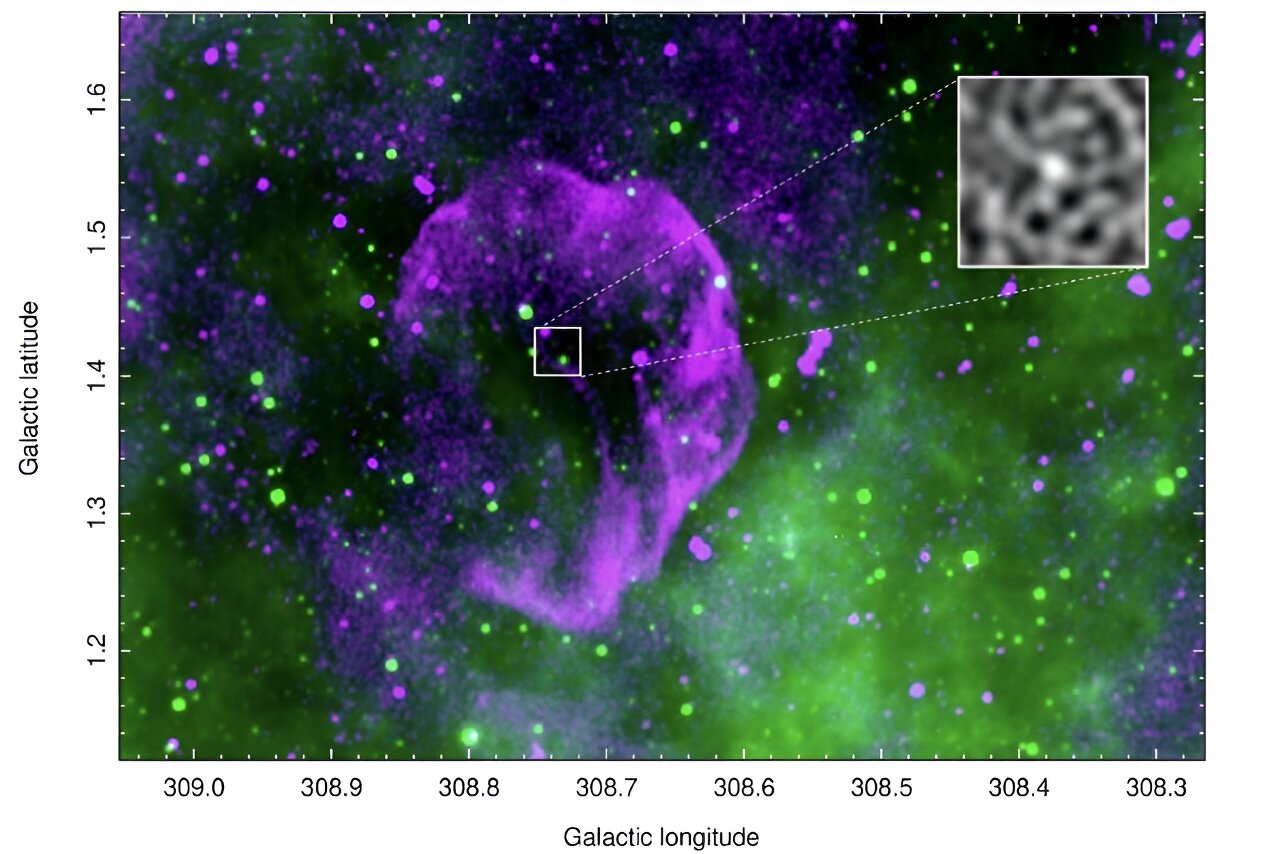
Astronomers from the Western Sydney University in Australia and elsewhere report the detection of a new supernova remnant (SNR) candidate. The newfound SNR candidate, dubbed “Raspberry” due to its morphology, was identified in the near side of the Milky Way’s Scutum-Centaurus Arm. The findings were detailed in the Research Notes of the American Astronomical Society.
Supernova remnants (SNRs) are diffuse, expanding structures resulting from a supernova explosion. They contain ejected material expanding from the explosion and other interstellar material that has been swept up by the passage of the shockwave from the exploded star.
Studies of supernova remnants are important for astronomers, as they play a key role in the evolution of galaxies, dispersing the heavy elements made in the supernova explosion and providing the energy needed for heating up the interstellar medium. SNRs are also believed to be responsible for the acceleration of galactic cosmic rays.
Recently, a team of astronomers led by Western Sydney University’s Sanja Lazarević has serendipitously discovered a new galactic SNR candidate as part of the Australian Square Kilometer Array Pathfinder (ASKAP) Evolutionary Map of the Universe survey (EMU). The object received designation G308.73+1.38 and was nicknamed Raspberry due to its resemblance to the well-known fruit.
“As a part of the large-scale ASKAP−EMU project, the SNR area of the sky was observed in December 2023 with a complete set of 36 ASKAP antennas at the central frequency of 943.4 MHz and bandwidth of 288 MHz. (…) We serendipitously discovered a new Galactic SNR candidate, dubbed Raspberry,” the researchers wrote in the paper.
Based primarily on its radio morphology, Lazarević’s team has classified Raspberry as a shell-type supernova remnant. It was noted that the extended shell at radio frequencies seen in Raspberry resembles typical shell-type SNRs. This shell is composed of a filamentary structure with the brightest regions occurring on the western edge.
The diameter of Raspberry is estimated to be between 32.5 and 98 light years, while the distance to it was measured to be 10,000–16,000 light years. The SNR candidate was measured to have a total integrated flux of 407 mJy over the entire shell area.
The observations also detected a possible circularly polarized point source near the center of Raspberry. The astronomers assume that this point source may be a neutron star, or possibly a pulsar, produced in the initial supernova event.
Summing up the results, the authors of the paper underlined that further investigation is required in order to confirm the SNR status for Raspberry.
“Particularly, additional radio-continuum bands would allow us to confirm the non-thermal origin of the radio emission (via spectral index); full Stokes parameters would allow us to study polarization which is a strong characteristic of the shell SNRs,” the scientists explained. https://phys.org/news/2024-05-raspberry-sky-astronomers-supernova-remnant.html









Recent Comments